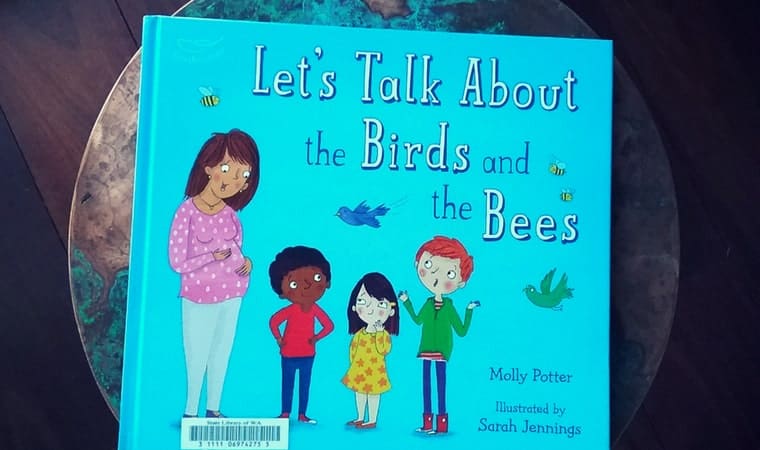The Joyful Talk: Exploring the Birds and the Bees with Your Children
Oh, hello there, wonderful parents! Are you pondering over how to introduce your curious munchkins to the enchanting story of where babies come from? You’ve fluttered to the right place! Embarking on the ‘birds and the bees’ conversation can be as smooth as a dove’s flight with the right approach and resources. And guess what? We’re here to chirp alongside you every step of the way! ?
Why It’s Important to Have “The Talk”
First off, let’s wrap our wings around why this chat is so important. Discussing the birds and the bees isn’t just about human reproduction – it’s an open window for honesty, trust, and building healthy attitudes towards bodies and relationships. It also chirps of safety and self-awareness which every child deserves as they grow. So, let’s nurture these seedlings with knowledge and positivity!
Winging it Age-Appropriately
Every little hatchling develops at their own pace, and that’s perfectly natural! Tailor your discussion to your child’s age, understanding, and curiosity. Remember, this isn’t one big talk but a series of small, digestible conversations that plant the seeds for a lifetime of open communication. For the littlest nestlings, simple truths about body differences and where babies come from can be just the start. Older fledglings might be ready for more detail about puberty and conception.
How to Get the Conversation Started
Launching the birds and the bees talk can seem daunting, but it can start simpler than you think. Watch for natural openings in everyday life, such as when a family friend has a baby or an animal on television starts a family. Encourage questions and keep your responses as clear and honest as possible – no need for too many frills or complex words. It’s about laying the groundwork for open dialogue.
Choosing the Right “Birds and the Bees” Book
? Book Picks for Various Ages
Children’s books can be a fantastic way to flutter into these topics gently. Picture books with friendly illustrations can make abstract concepts more concrete for younger minds. Older children might appreciate a more detailed and narrative approach, perhaps with chapters and scenarios they can relate to. Below, we’ve gathered some delightful reads to help you begin this journey:
- What’s the Big Secret?: Talking about Sex with Girls and Boys – A wonderfully neutral-toned book, great for initiating conversation without overwhelming your little bee.
- It’s Not the Stork!: A Book About Girls, Boys, Babies, Bodies, Families and Friends – This whimsical book is perfect for young children as it introduces body parts and family structures in a friendly, age-appropriate manner.
- Where Did I Come From? – A classic choice for budding minds, answering the timeless question with humor and charm suitable for a child’s understanding.
Now, our winged journey is just beginning, and there’s so much more to cover! Together we’ll explore the nuances of these discussions, diving into deeper topics and strategies to ensure your birds-and-bees talk is as smooth as a dandelion in the breeze.
Stay tuned, nurturing nest-makers, as the magic of growth unfolds! ???

Five Essentials Parents Should Know Before Approaching the Birds and the Bees Talk
1. Preparation is Key
Before you dive into the conversation about the birds and the bees, it’s important to prepare yourself mentally and emotionally. Brush up on the basic biological facts so you’re comfortable explaining them. It’ll help if you’re clear about your own values and beliefs regarding relationships and sexuality as they will inevitably influence your discussion.
2. Foster an Open Environment
Creating a home atmosphere where questions of any kind are welcomed with warmth and honesty will ease into this talk naturally. Children tend to be more receptive in such supportive environments, and this can help them feel safe in bringing up their curiosity or concerns.
3. Listen More Than You Speak
Encounter this talk as a dialogue rather than a monologue. Give your child the space to voice their thoughts and questions. This not only validates their feelings but also helps you gauge their level of understanding and tailor your responses accordingly.
4. Avoid Euphemisms
While ‘birds and bees’ may seem like a cute way to talk about a serious subject, it’s crucial to use the correct terms for body parts and processes. This clarity eliminates confusion and helps children understand and respect their own bodies and those of others.
5. Expect Follow-up Questions
This will not be a one-time conversation, so be ready for subsequent questions as your child processes the information and encounters more situations that spark curiosity. To maintain a continuous and healthy dialogue, check in from time to time to add more information as your child grows.
With these guiding beacons, you’re all set to navigate the conversations about the birds and the bees with confidence and joy. Remember, these discussions are not just about facts, but also about feelings, respect, and the beauty of human connection. So, spread your wings and let this journey of sharing and learning bring you and your little ones closer together. ???
See more great Things to Do with Kids in New Zealand here. For more information see here
Disclaimer
The articles available via our website provide general information only and we strongly urge readers to exercise caution and conduct their own thorough research and fact-checking. The information presented should not be taken as absolute truth, and, to the maximum extent permitted by law, we will not be held liable for any inaccuracies or errors in the content. It is essential for individuals to independently verify and validate the information before making any decisions or taking any actions based on the articles.




